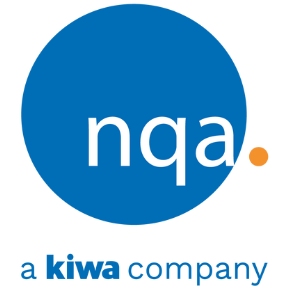ISO 9001:2015 Impact on Small Business
The ISO 9001:2015 quality management system standard, released September 2015, is the fifth edition of one of ISO's best known and most widely accepted standards. More than 1 million companies and organizations are formally certified, or registered, to demonstrate their compliance with the requirements of ISO 9001.
For small businesses, the changes in the standard present both challenges and opportunities. The challenges are found in learning and implementing the new requirements with limited people-resources who are currently busy running their businesses. But there are also many opportunities the new standard introduces to streamline and improve business processes and the overall quality management system.
In fact, a primary objective of the new standard is to make the requirements better suited and more in line with smaller companies while global supply chains, government procurement officers and other market drivers expand the use of ISO 9001 as a supplier management tool. With these growing demands, small businesses must consider certifying to the new standard.
ISO 9001:2015 Changes
In order to respond to changing needs of the million+ users of the standard along with requirements of customers and other interested parties who need to manage risk in diverse and expanding global supply chains, substantial modifications were needed to a standard that had its last major revision in 2000 (the ISO 9001:2008 was a minor amendment) some fifteen years ago.
Some of the top objectives for the revision were:
1. Make the requirements equally useful to product-oriented (e.g. manufacturers, distributors, etc.), service-oriented and other non-manufacturing businesses.
2. Put greater emphasis on the process approach and measurable results to demonstrate continual improvement.
3. Provide greater flexibility in how documentation, leadership and other management system activities are addressed to adapt to specific needs of individual companies.
4. Expand preventive action into risk-based thinking to include planning, identification and addressing risks faced by the company that may impact its products, services and customers.
5. Align the ISO 9001 requirements with related standards such as ISO 14001, OHSAS 18001, ISO 27001 and others to make it easier to maintain more than one certification.
The resulting changes should make the ISO 9001 certification more effective in helping companies of any size (especially small businesses) in any industry manage risk, improve quality and better serve their customers. At the same time, many aspects of the quality management system will be able to be greatly simplified and specifically tailored to the unique needs and resources available.
What are the major changes in the standard?
In some respects, the ISO 9001:2015 was rewritten from scratch. Its structure and terminology have been reworked to better match similar standards and make it more "user friendly" to companies using the standard. And while virtually all ISO 9001:2008 requirements have been preserved, there are some significant new additions. Here’s a listing of the Top 10 Changes:
1. New Look, Organization and Terminology2. Expanded Leadership Responsibilities for Top Management
3. Management Planning to Address the Context of the Organization
4. Introduction of Risk-Based Thinking
5. Flexibility in Documentation Requirements
6. Strengthened Process Approach
7. Planning for Changes
8. Managing Organizational Knowledge
9. People Resources
10. Design and Development of Services
What do small businesses need to consider when planning their ISO 9001:2015 implementation?
While the main reasons for the changes in the ISO 9001:2015 standard were to meet current industry requirements and appeal to companies in new industries, the ISO/TC 176 committee focused specifically on the needs of smaller companies. The new standard gives you an opportunity to re-think and revise your QMS to make it better suited to your needs and more effective for your company.
You don’t have to keep doing what you have always done.
Here are some suggestions for small business:
- Simplify your QMS.
- Involve top management.
- Don't change things that are working.
- Seek outside help through training or consulting programs.
- Consider having a quality manual to match the ISO 9001:2015 requirements, though this is not a requirement. There is value in documenting your Quality Management System requirements for ISO in one place.
- Consider revising or eliminating some procedures. There are no specific requirements for the 6 procedures that were required in ISO 9001:2008. Many small companies may choose to address most ISO 9001:2015 requirements for Documented Information in a single quality manual.
- Make it your own. Don't just copy what you see other companies doing to meet the new requirements. Tweak things to fit your business.
As the requirement to be ISO 9001:2015 certified moves down the supply chain to smaller companies, there are many benefits such as:
- Increased business efficiency
- Higher levels of customer satisfaction
- Lower unnecessary costs
- More reliable quality processes and products.
ISO certification for small business is a win-win for the company being certified and their customers.
Reviewed by: Michael Venner, NQA Aerospace and Automotive Director
